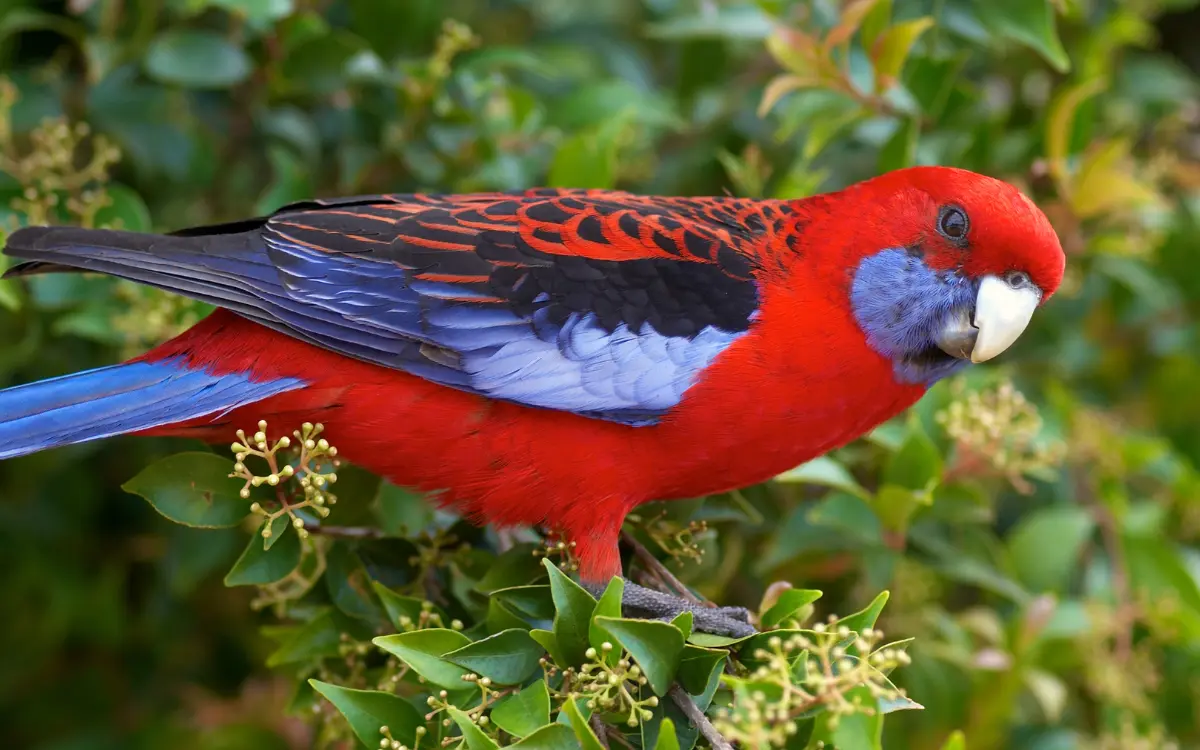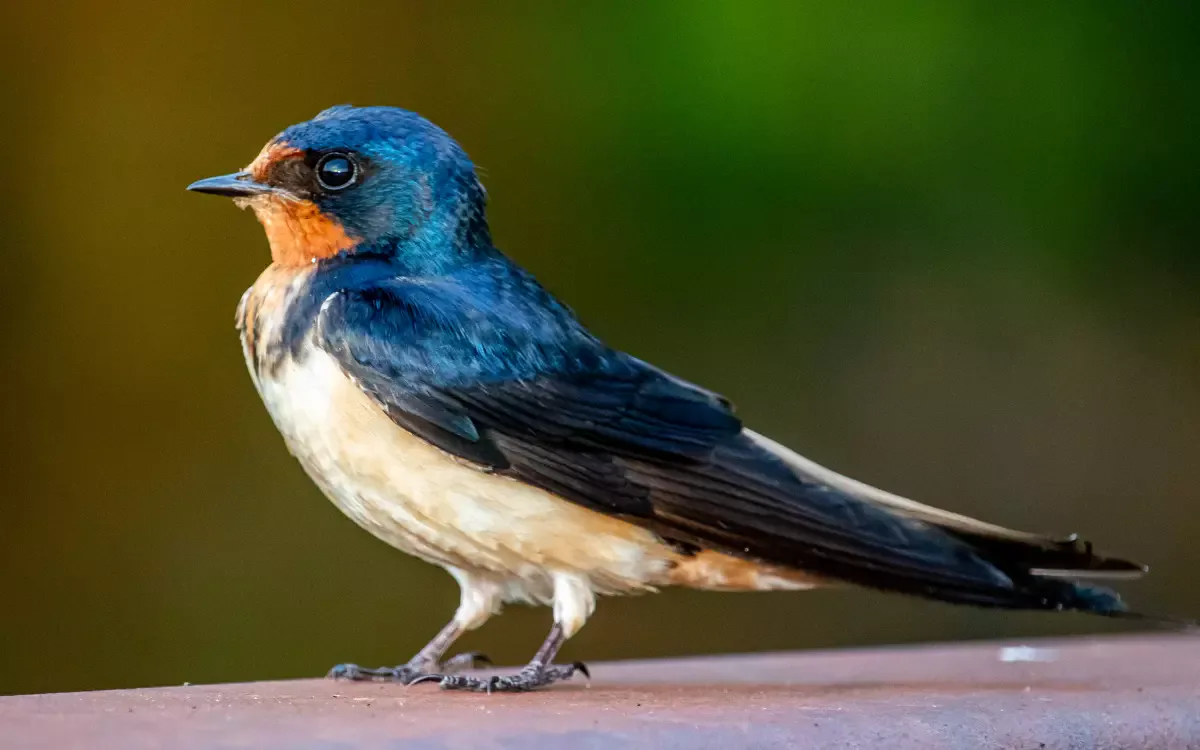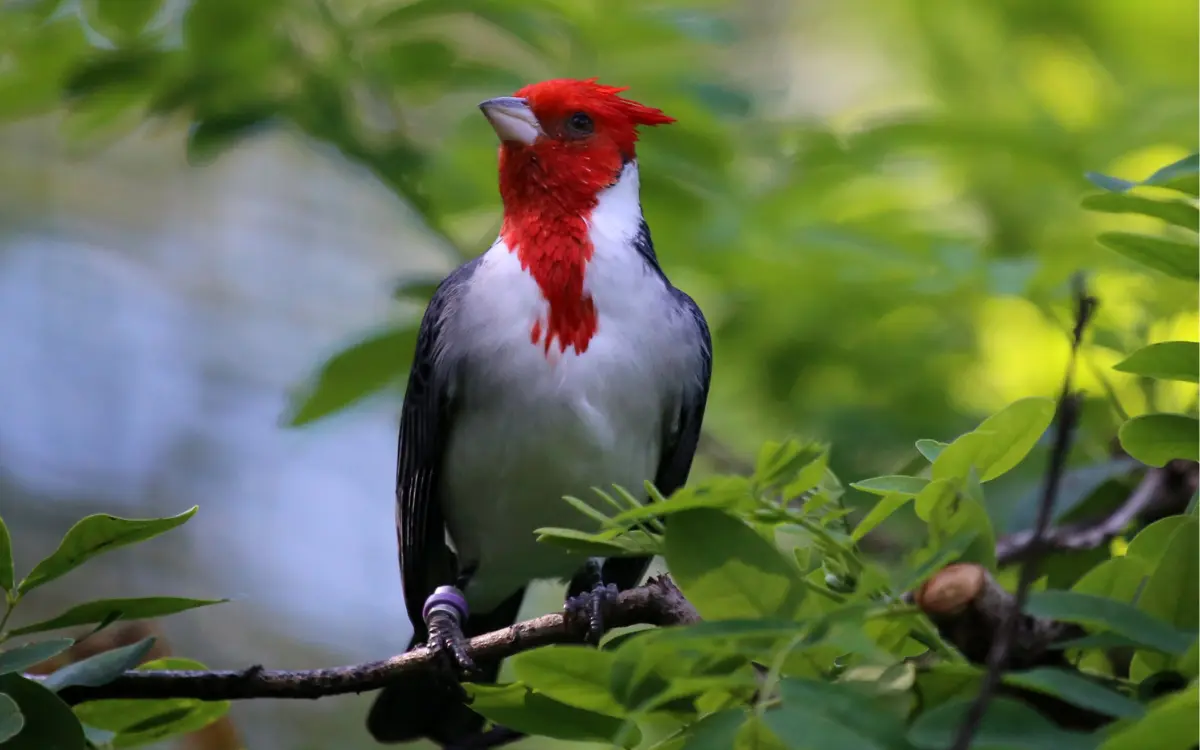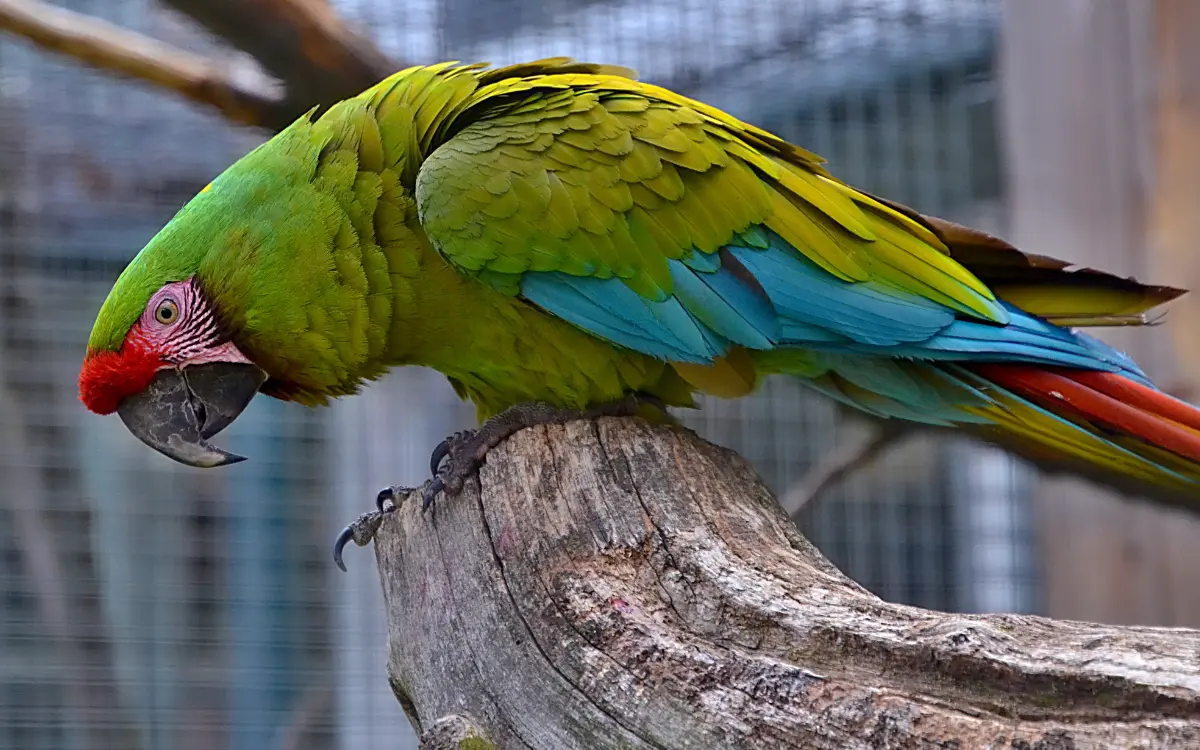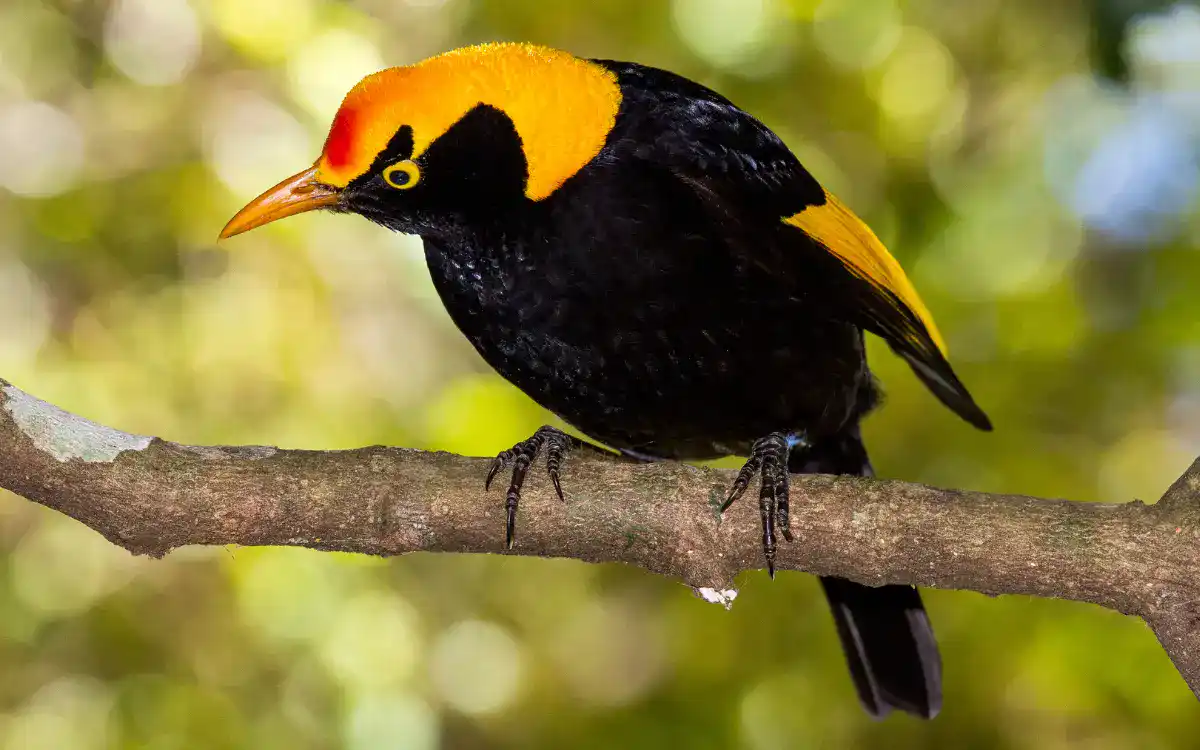20 Birds With Colorful Beaks (Picture & Call)
Today we collected the most beautiful birds whose colour attracts your eyes. Birds with colorful beaks include species like the toucan, with its large, multicolored Puffins, and the Mandarin Duck known for its bright red beak.
List of 20 Birds With Colorful Beaks:
1. Toco Toucan:
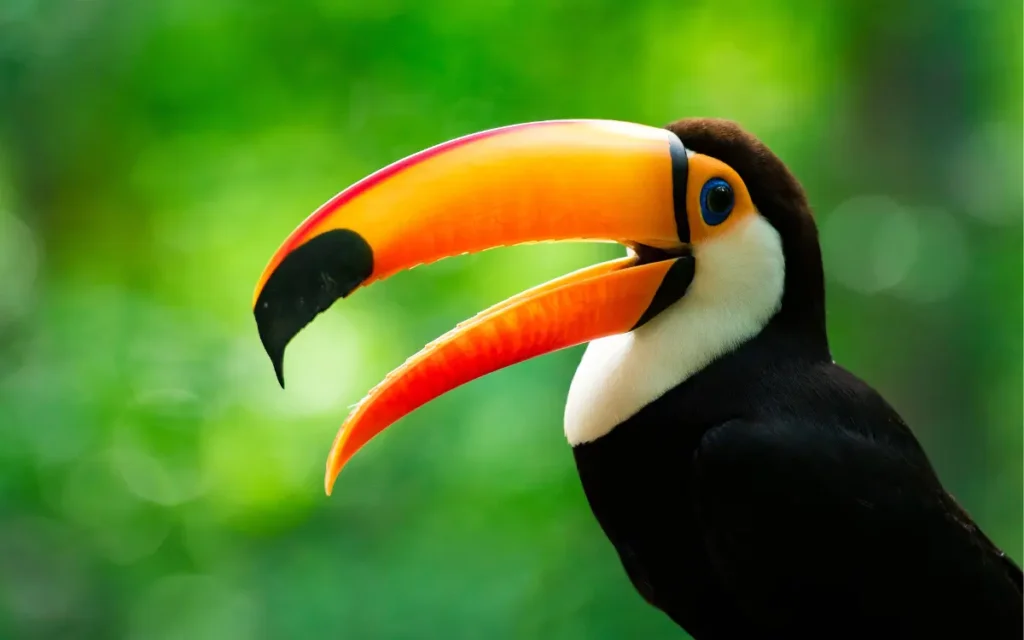
The Toco Toucan’s most distinctive feature is its oversized, brightly colored bill. The bill is orange-yellow with a black base and can reach up to half the length of the bird’s body. They are social birds and are often seen in small flocks.
They are known for their distinctive croaking calls. Its body is primarily black with white throat feathers and a white bib.
The eye is surrounded by a patch of bright blue skin, and its legs are blue-gray. They are often seen in the canopy of trees.
- Scientific Name: Ramphastos toco
- Wingspan: 43 – 60 in (109.22 -152.4cm )
- Weight: 12 – 24 oz (500-876gm )
- Egg: The birds lay 2 to 4 eggs per year
- Location to see: Central America, North America, and South America
Call:-
2.Rhinoceros Hornbill:
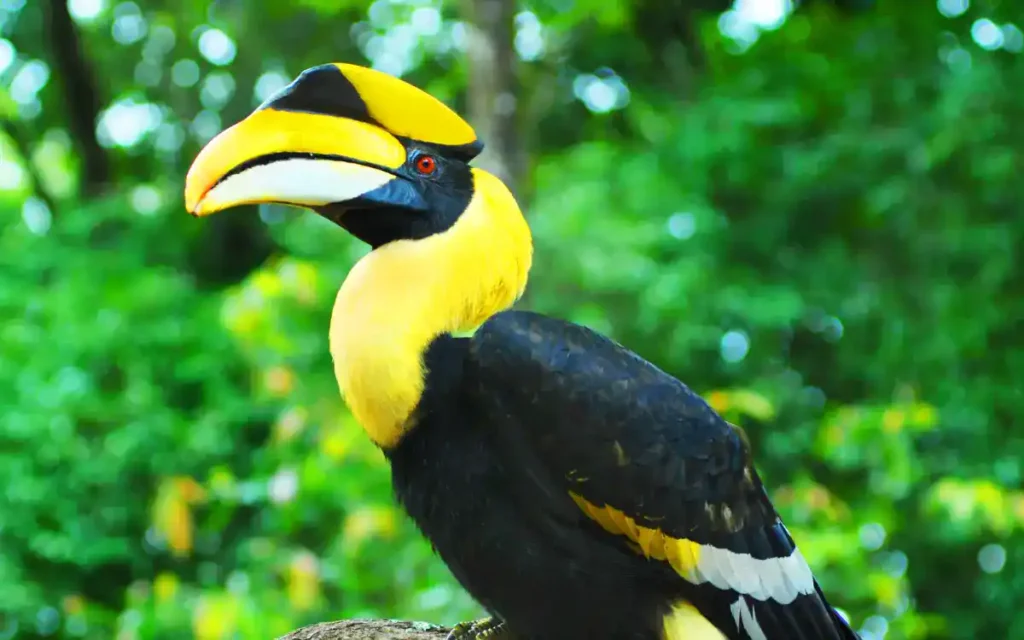
Rhinoceros Hornbills are one of the larger hornbill species, They are also known for their striking appearance, with a large and brightly colored bill that resembles a rhinoceros horn.
The bill is orange-yellow with a red base and a casque, or hollow structure, on top.
The plumage of this bird is predominantly black, with white on the belly and legs. The tail is white with a black band, and it has a white patch on its wings, which is visible in flight.
Rhinoceros Hornbills are typically found in dense tropical forests and can be seen at various altitudes, from sea level up to around 1,500 meters (4,900 feet).
- Scientific Name: Buceros rhinoceros
- Wingspan: 59 in (150cm)
- Weight: 72 – 104 oz (2,040 – 2,960 gm)
- Egg: Lay 1 – 2 eggs
- Location to see: Borneo, Sumatra, Java, the Malay Peninsula, Singapore, and southern Thailand.
Call:-
3. American White Pelican:
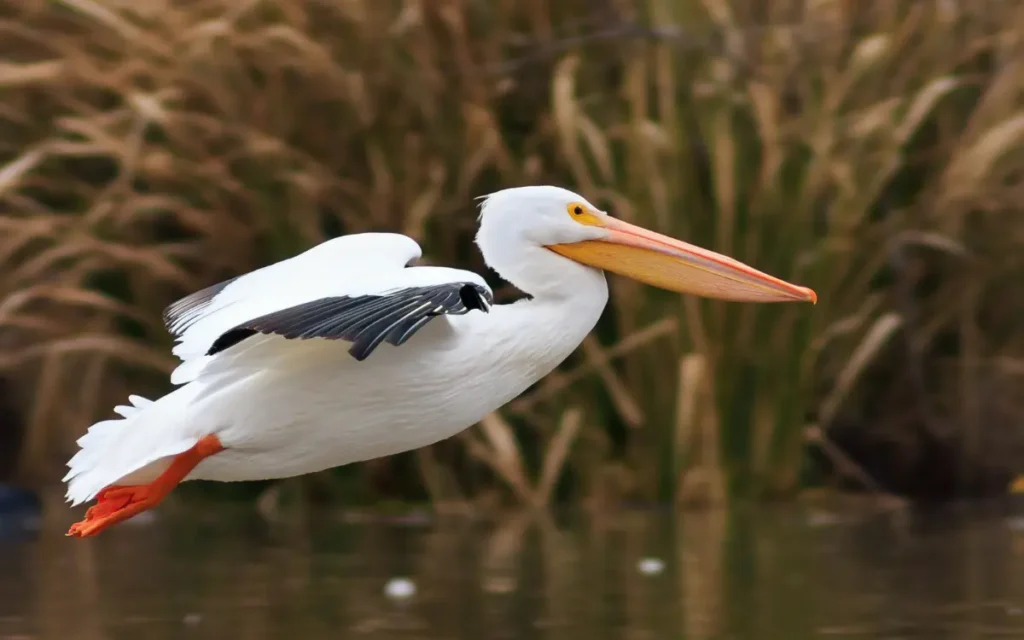
The American White Pelican is a large water bird distinguished by its impressive size and unique features.
These pelicans have striking white plumage with black flight feathers visible when their wings are spread.
They possess long, broad bills with a distinctive orange-red to pale pinkish color, featuring a throat pouch for scooping up fish.
American White Pelicans are highly social birds, often foraging and roosting in large groups.
They feed on fish in cooperative groups, migrate seasonally, and nest in colonies on freshwater lakes. Their populations are currently stable, but habitat loss remains a concern.
- Scientific Name: Pelecanus erythrorhynchos
- Wingspan: 96.1-114.2 in (244 – 290 cm)
- Weight: 158.7- 317.5 oz (4500 – 9000 gm)
- Egg: Lay 2 eggs
- Location to see: Manitoba, Canada, and Minnesota west to northern California. And winters in California, Mexico, Central America, along the Gulf Coast, and in Florida.
Call:-
4. Rainbow Lorikeet:
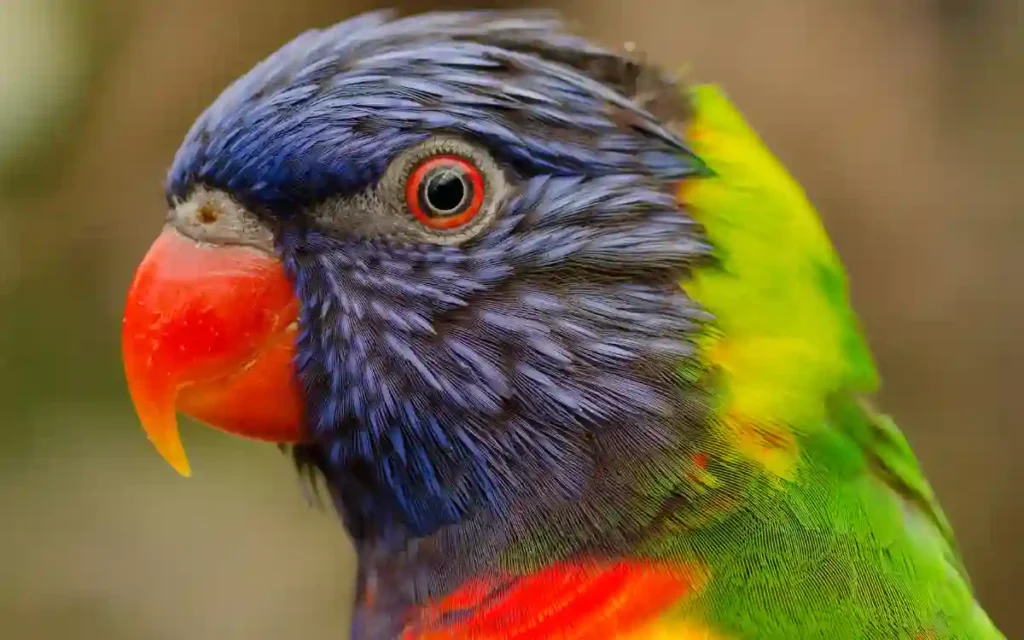
The Rainbow Lorikeet is a vibrant and colorful parrot native to Australia. Known for its striking plumage, it features a rainbow of colors on its feathers. These social birds often gather in flocks and display playful behavior.
They primarily feed on nectar from flowers, using specialized brush-like tongues. Rainbow Lorikeets are also known for their loud and frequent high-pitched calls.
Their adaptability allows them to thrive in various environments, including urban areas.
- Scientific Name: Trichoglossus haematodus
- Wingspan: 6.7 in (17 cm)
- Weight: 2.6 – 5.5 oz (75 -157 gm)
- Egg: a clutch of between 1 and 3 eggs,
- Location to see: Eastern Australia, Queensland, New South Wales, Victoria, South Australia, Tasmania, Northern Territory, and Western Australia
Call:-
5. Atlantic Puffins:
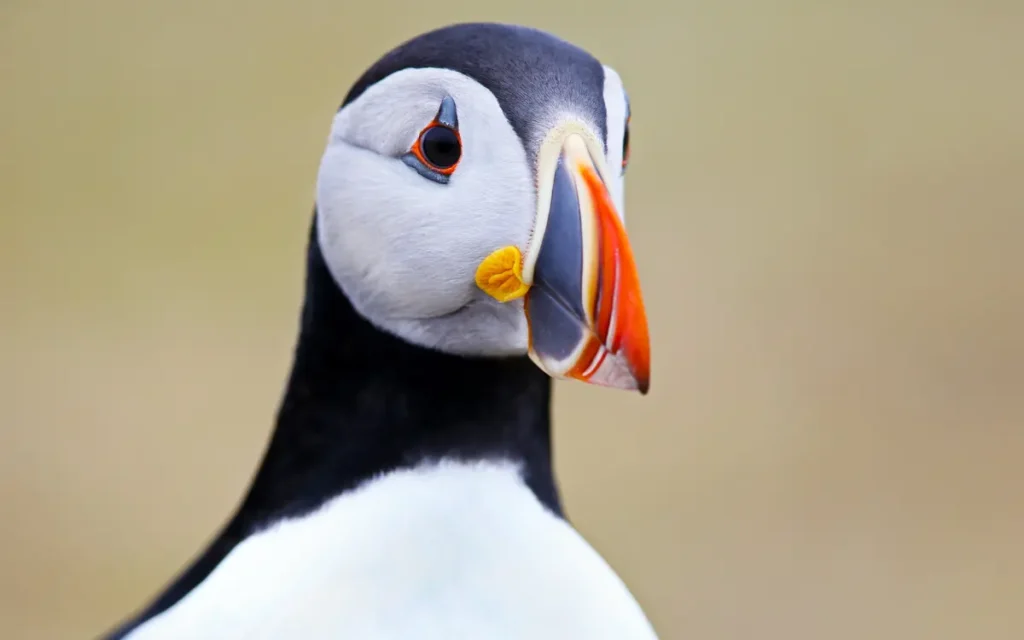
The Atlantic Puffin is a distinctive seabird known for its colorful appearance. These birds have black and white plumage, with striking orange legs and a brightly colored, wedge-shaped bill during the breeding season.
Puffins are excellent swimmers and divers, using their wings to “fly” underwater. They primarily feed on fish and small marine creatures.
Puffins are known for their distinctive, raspy calls and burrow-nesting habits, typically laying one egg per clutch. Conservation efforts aim to protect their populations.
- Scientific Name: Fratercula arctica
- Wingspan: 21 in ( 53 cm)
- Weight: 13 oz ( 380 gm )
- Egg: Lay 1 egg
- Location to see: Iceland,Norway, United Kingdom, Ireland, Canada, Faroe Islands, France, United States and Atlantic Puffins are found exclusively in the North Atlantic Ocean
Call:-
6. Keel-billed Toucan:
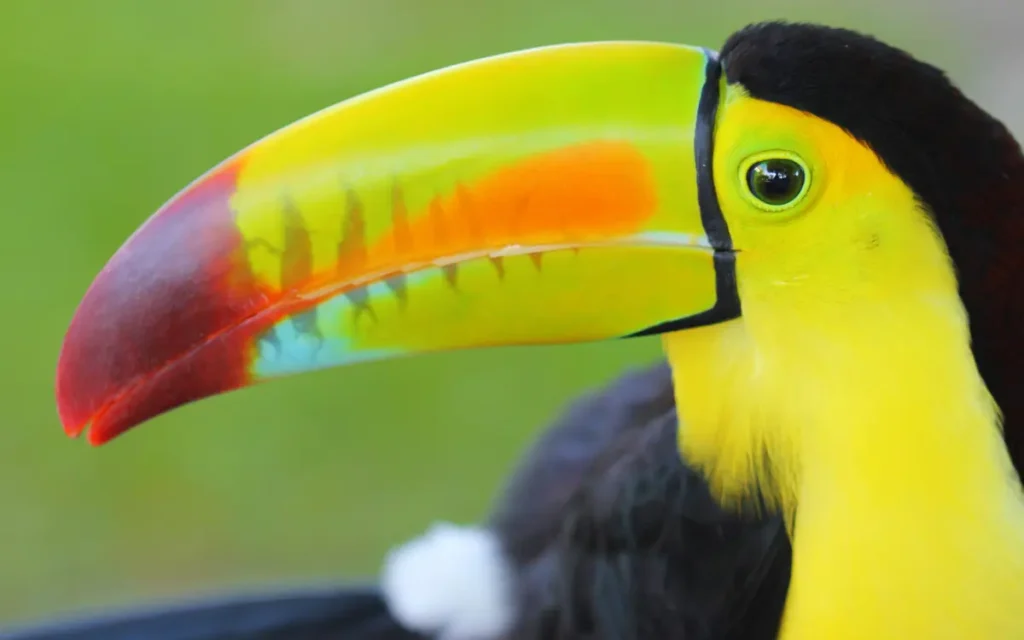
The Keel-billed Toucan is a colorful and distinctive bird known for its large, multi-colored bill. Its plumage is mainly black with a vibrant green throat and a red undertail. Keel-billed
Toucans primarily feed on fruits, using their bill to pluck and manipulate food.
They are social birds often seen in small groups and produce croaking calls. These toucans are cavity nesters, both parents participate in incubation and chick-rearing. Conservation efforts are in place to protect their populations.
- Scientific Name: Ramphastos sulfuratus
- Wingspan: 43 – 60 in (109 – 152cm)
- Weight: 14 oz (396.89 gm )
- Egg: Lay 2 to 4 eggs
- Location to see: Central America and South America
Call:-
7. Roseate Spoonbill:
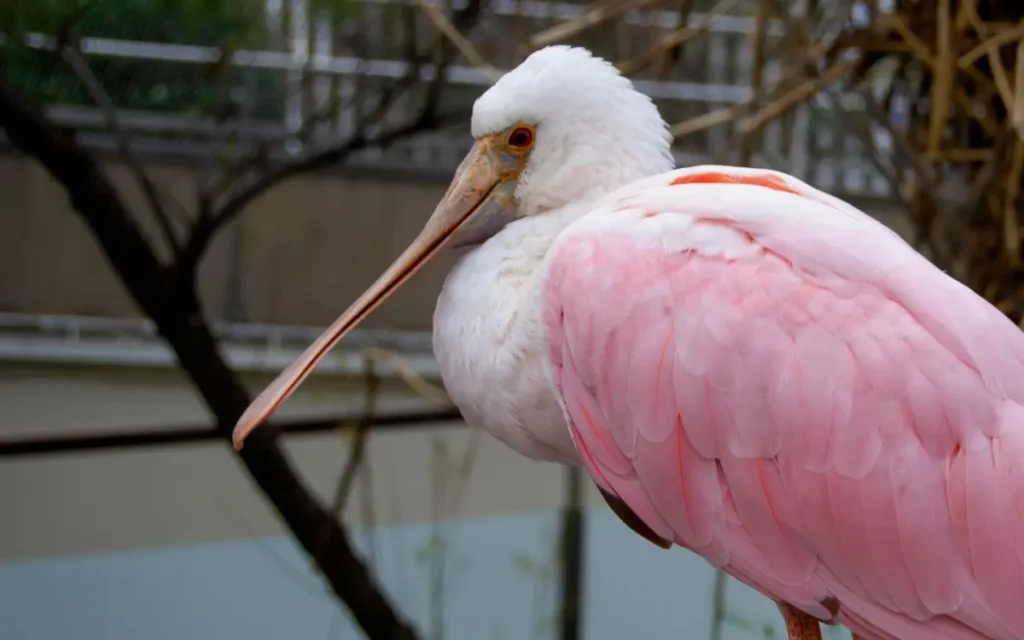
The Roseate Spoonbill is a striking wading bird known for its unique appearance. It has pink plumage, a long, slender neck, and a distinctive spoon-shaped bill.
These birds primarily feed in shallow water, sweeping their bill from side to side to catch small aquatic creatures.
They are social birds, often seen in groups, and produce soft, grunting calls. Roseate Spoonbills nest in colonies, and both parents take part in incubation and chick-rearing. Conservation efforts aim to protect their populations.
- Scientific Name: Platalea ajaja
- Wingspan: 127 cm ( 50 inches).
- Weight: 42.32 – 63.49 oz (1199.75 -1799.91 gm )
- Egg: Lay 2 to 5 eggs
- Location to see: Central and South America, the Galápagos Islands, the Caribbean Islands, Mexico, and the United States
Call:-
8. Scarlet Macaw:
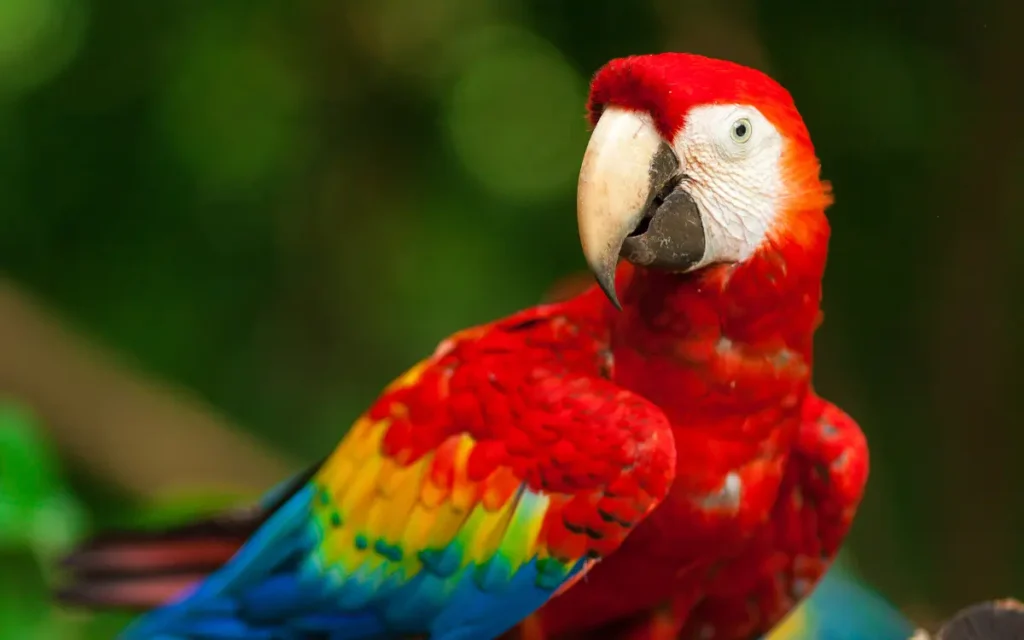
The Scarlet Macaw is a vibrant and large parrot species known for its stunning appearance. It boasts bright scarlet plumage with blue and yellow accents, a strong hooked bill, and a long tail.
These parrots are highly social and often seen in pairs or flocks. They are excellent fliers, using their strong wings for maneuvering through the forest canopy.
Scarlet Macaws primarily feed on fruits, nuts, and seeds, with powerful beaks for cracking open tough shells. They are known for their loud, raucous calls and are popular in the pet trade.
- Scientific Name: Ara macao
- Wingspan: 39.6 in (100.58 cm)
- Weight: 35.27 – 42.32 oz (1000-1200 gm)
- Egg: Lay 1 to 4 eggs
- Location to see: Central America and South America
Call:-
9. Blue-and-yellow Macaw:
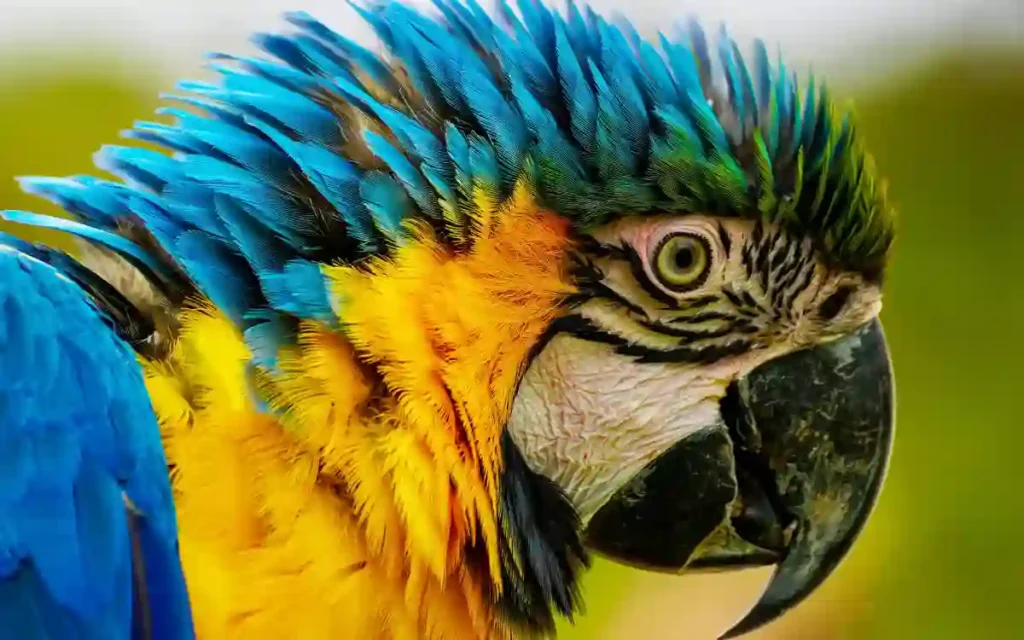
The Blue-and-yellow Macaw is a striking parrot species with vibrant blue plumage on its upperparts, bright yellow plumage underneath, and a strong, hooked beak. These macaws are highly social birds and often form pairs or small flocks.
They have powerful beaks designed for cracking nuts and seeds. Blue-and-yellow Macaws are known for their loud, raucous calls and are intelligent birds capable of mimicking human speech.
- Scientific Name: Ara ararauna
- Wingspan: 41- 45 in (104 -114 cm)
- Weight: 31.74 – 52.91 oz (900 – 1500 gm)
- Egg: Lay 2 to 3 eggs
- Location to see: South America, from Panama in the north to Argentina in the south, and Amazon Rainforest – Brazil
Call:-
10. Northern Cardinal:
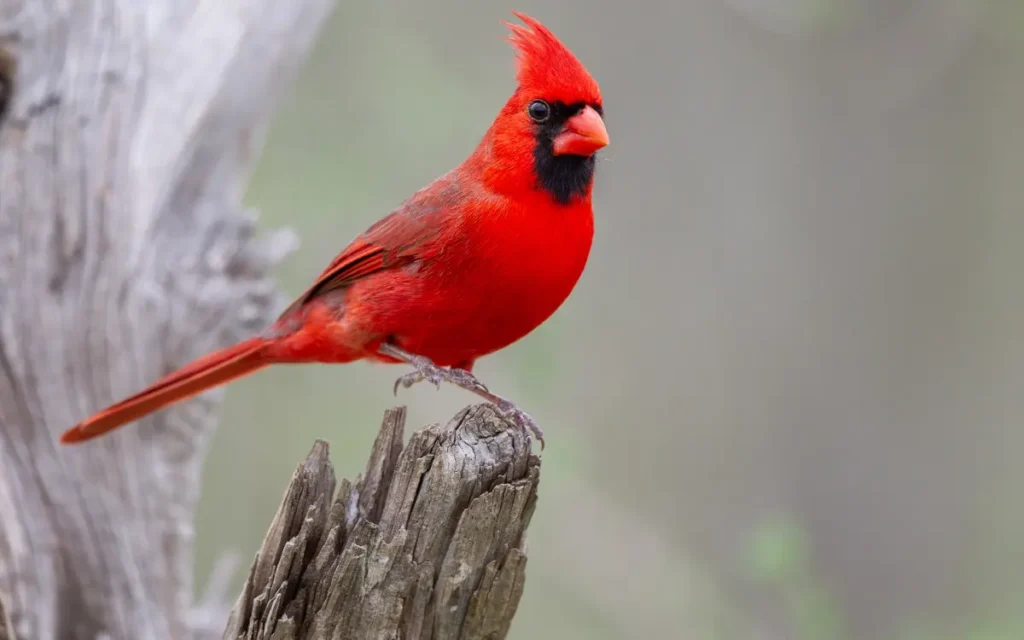
The Northern Cardinal is a striking bird known for its vibrant red plumage and distinctive cone-shaped beak. Males boast brilliant red feathers, while females are generally brown with red accents.
Their strong, sturdy beaks are adapted for cracking seeds and consuming insects. Cardinals are resident birds, often staying in the same area year-round.
They are territorial and known for their sweet, melodious songs, making them a popular sight and sound in many regions.
- Scientific Name: Cardinalis cardinalis
- Wingspan: 9.8 -12.2 in (25 – 31 cm)
- Weight: 1.5 – 1.7 oz (42 – 48 gm)
- Egg: Lay 2-5 eggs
- Location to see: Central America and North America
Call:-
Read also:-
- 20 Birds Black and Orange: Species,Lifespan, Wingspan
- 25 Birds with Red Heads: A Comprehensive Guide
11.Red-billed Hornbill:
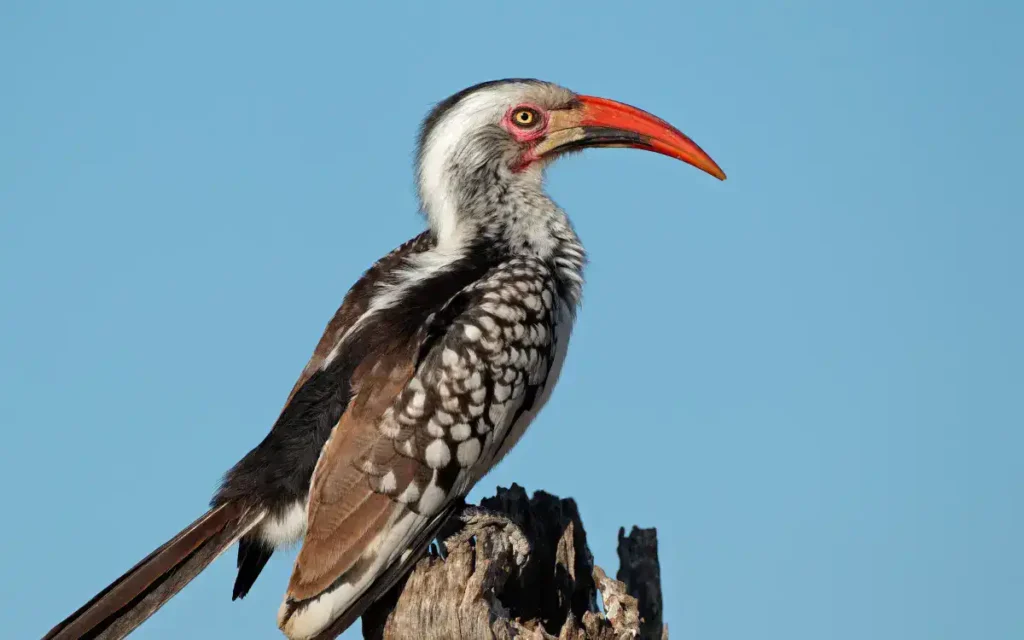
The Red-billed Hornbill is a distinctive bird with a bright red beak and striking black and white plumage. These birds are known for their unique nesting habits, often sealing themselves inside tree cavities with a mixture of mud and droppings during the breeding season.
Their beaks are long, curved, and pointed, adapted for capturing insects and small prey. Red-billed Hornbills are skilled fliers and emit loud calls, making them a recognizable presence in their habitats.
- Scientific Name: Tockus erythrorhynchus
- Wingspan: 20 – 24 in ( 50 – 60 cm).
- Weight: 3.17 – 7.76 oz (90 -220 gm )
- Egg: Lay 3 to 6 eggs
- Location to see: Africa, Asia, and Oceania
Call:-
12. Red-throated Bee-eater:
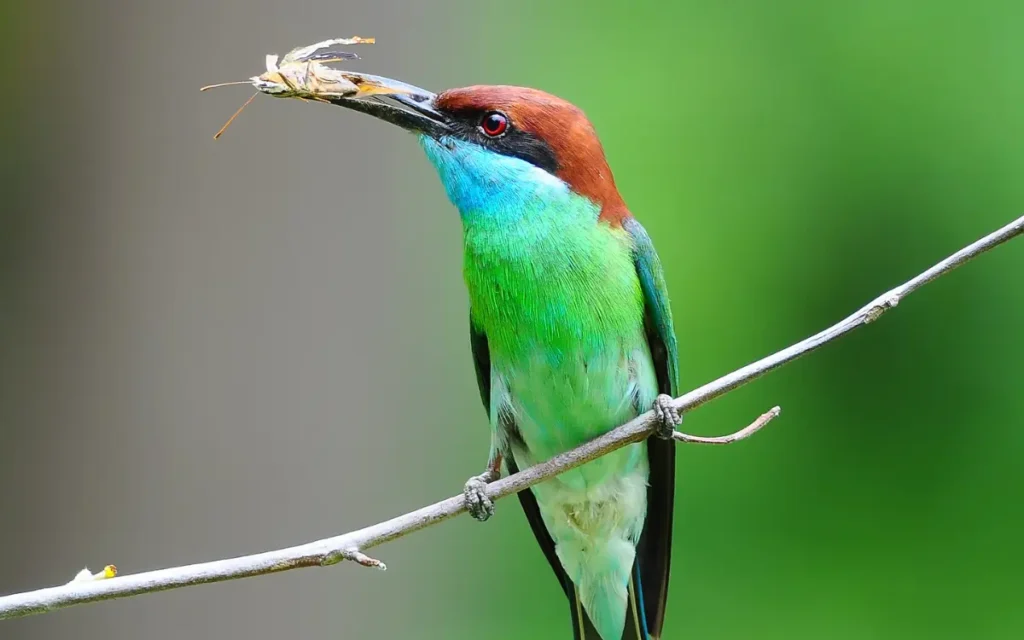
The Red-throated Bee-eater is a striking bird with colorful plumage, including a red throat patch. It possesses a slender, slightly curved beak designed for catching flying insects, particularly bees.
These bee-eaters are agile flyers, often seen in acrobatic aerial displays. They are social birds that nest in colonies, digging burrows in riverbanks. Their vibrant appearance and graceful flight make them a captivating sight in their habitats.
- Scientific Name: Merops bulocki
- Wingspan: 10 – 20 in ( 25.4 – 50.8 cm )
- Weight: 0.74 – 0.98 oz (21 – 28 gm)
- Egg: Lay 2 to 4 eggs.
- Location to see: Senegal and Gambia in the west to Uganda, southern Sudan, and Ethiopia in the east.
Call:-
13. Greater Flamingo:
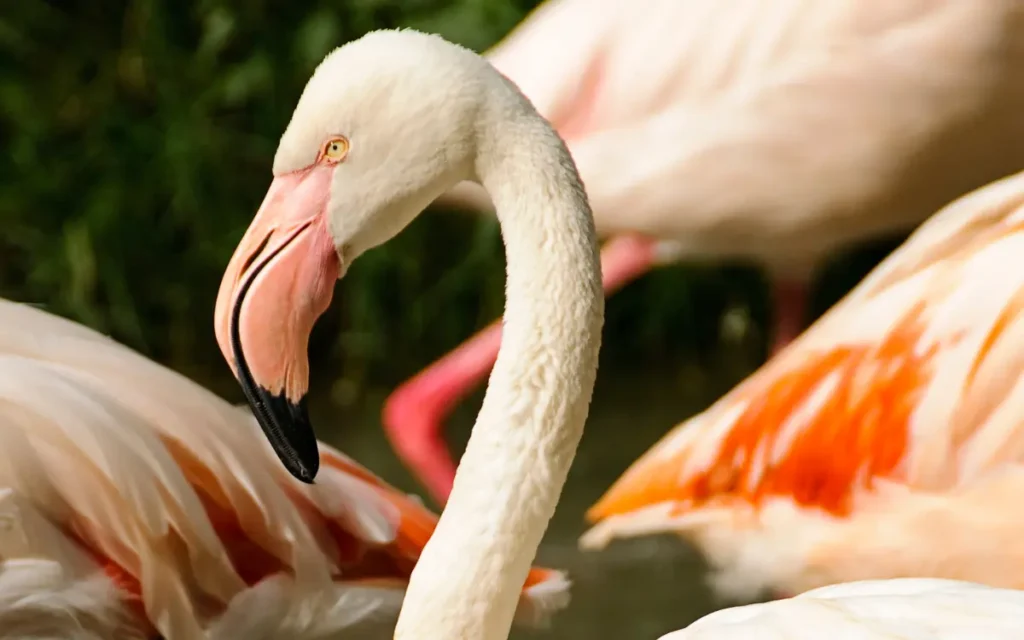
The Greater Flamingo is a distinctive wading bird with pink plumage and long, slender legs. Its beak is uniquely adapted with a downward bend and a distinctive black tip, allowing it to filter small aquatic organisms like algae and crustaceans from water.
These social birds are often seen in large flocks and are known for their graceful, synchronized movements while wading. Greater Flamingos are found in various wetland habitats and are skilled at both swimming and flying.
- Scientific Name: Phoenicopterus roseus
- Wingspan: 55 – 65 in (140 to 165 cm )
- Weight: 70.54 – 141.09 oz (1999.77 – 3999.83 gm)
- Egg: Lay 1 large egg
- Location to see: Africa, Asia, and the Americas
Call:-
14.Yellow-billed Hornbill:
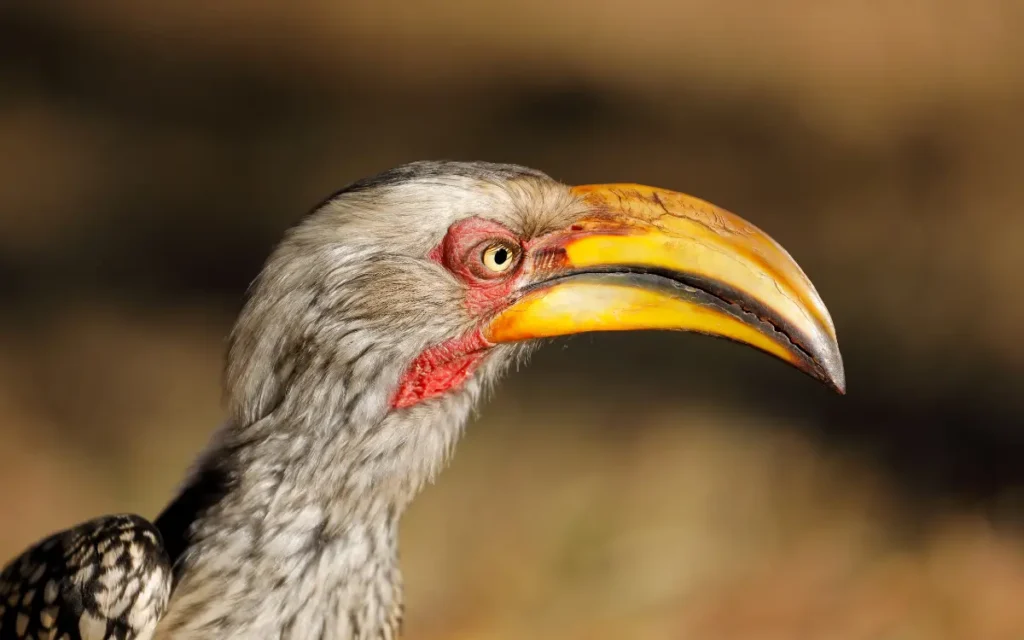
The Yellow-billed Hornbill is a bird with striking features, including a bright yellow, curved bill and black and white plumage. Their beaks are adapted for catching insects and small prey.
These hornbills are known for their distinctive cackling calls and are often seen in pairs or small groups. They are skilled fliers and agile in tree-climbing. Yellow-billed Hornbills are known for nesting in tree cavities and are a common sight in their habitats.
- Scientific Name: Tockus leucomelas
- Wingspan: 16 – 20 in ( 40 – 50 cm)
- Weight: 3.9 – 6.7 oz (110 -190 gm )
- Egg: Lay 3 to 4 eggs.
- Location to see: Eastern and Southern Africa, Western Africa, and Central Africa
Call:-
15. Black-necked Stilt:
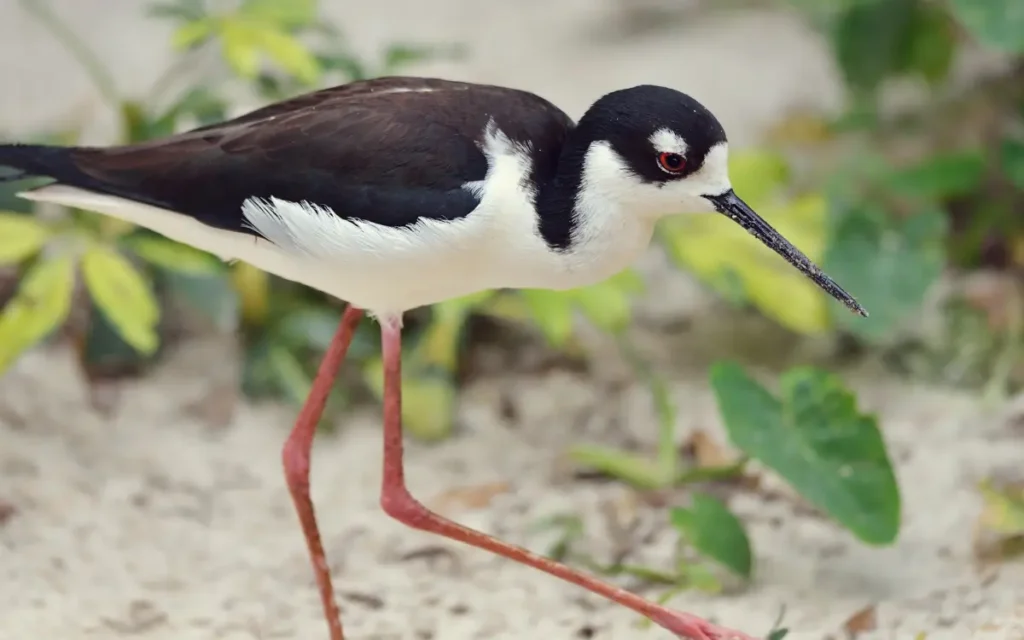
The Black-necked Stilt is a striking wader bird with black and white plumage and long, thin legs. Its slender, straight beak is adapted for capturing small aquatic invertebrates, crustaceans, and insects in shallow waters.
These stilts are known for their distinctive high-pitched calls and are often seen in wetland habitats. They build nests on the ground and are highly territorial during the breeding season, engaging in aerial displays to defend their territory.
- Scientific Name: Himantopus mexicanus
- Wingspan: 28.1-29.7 in (71.5 – 75.5 cm)
- Weight: 5.3 – 6.2 oz (150 -176 gm)
- Egg: Lays 3 to 5 buff-colored eggs
- Location to see: United States, Mexico, Central America, South America, and Caribbean Islands
Call:-
16. Red-breasted Merganser:
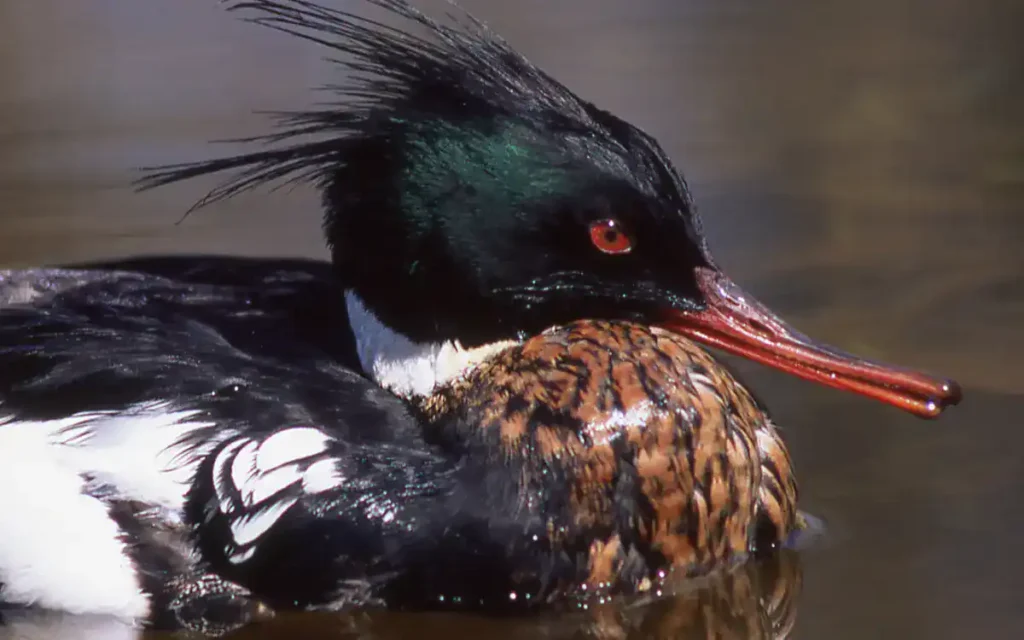
The Red-breasted Merganser is a diving duck with a distinctive appearance, including a long, narrow beak equipped with serrated edges, ideal for catching fish. Its plumage features a reddish-brown breast with white markings and a gray body.
These birds are strong swimmers and divers, often seen in coastal areas and large bodies of water. They are skilled at pursuing fish underwater and are known for their sharp, raspy calls.
- Scientific Name: Mergus serrator
- Wingspan: 26.0 – 29.1 in (66 – 74 cm)
- Weight: 28.2 – 47.6 oz (800 -1350 gm)
- Egg: Lay 6 to 9 eggs.
- Location to see: North America, Northern Europe, the Baltic Sea, Northern Europe, and Asia.
Call:-
17. Reddish Egret:
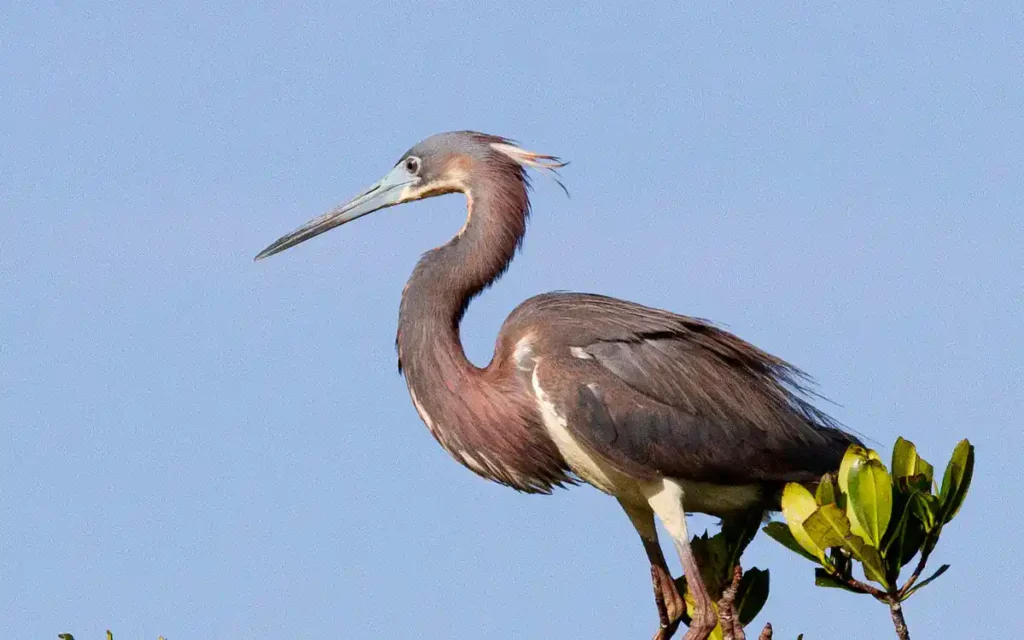
The Reddish Egret is a medium-sized wading bird known for its striking appearance and unique feeding behavior. It has a long, slender, and slightly curved bill, which aids in capturing prey.
Their plumage ranges from dark gray to reddish-brown, and they often exhibit a shaggy appearance. These egrets are skilled hunters, using their bills to stir up water and trap fish and crustaceans.
- Scientific Name: Egretta rufescens
- Wingspan: 45.3 – 46.5 in (115 – 118 cm)
- Weight: 24.7 – 30.0 oz (700 – 850 gm)
- Egg: Lay 3 to 6 eggs
- Location to see: Florida -USA, Texas – USA, Mexico, Central America, South America, and Caribbean Islands.
Call:-
18. Painted Bunting:
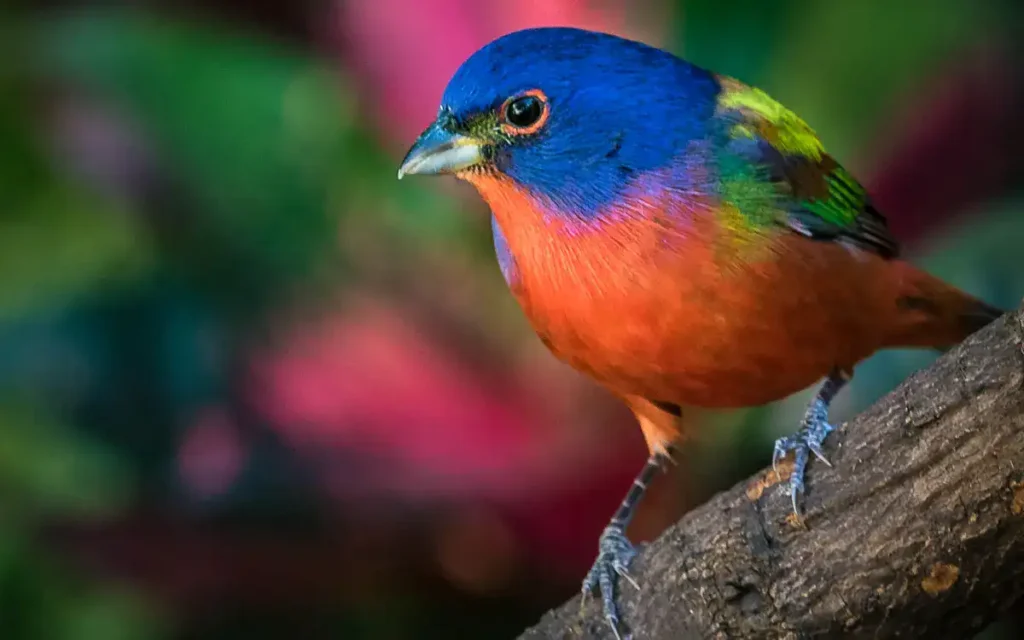
The Painted Bunting is a striking bird with vibrant plumage, displaying brilliant blue, green, and red colors.
Its beak is short and conical, designed for consuming seeds and insects. These small birds are known for their melodious songs, often heard during mating season.
Painted Buntings are found primarily in North America and are a treat for birdwatchers due to their stunning appearance and distinctive calls.
- Scientific Name: Passerina ciris
- Wingspan: 8.3–9.1 in (21–23 cm)
- Weight: 0.5-0.7 oz (13-19 gm)
- Egg: Lay 3-4 eggs
- Location to see: Southern United States, Eastern Seaboard, and Central America.
Call:-
19. Red-crowned Crane:
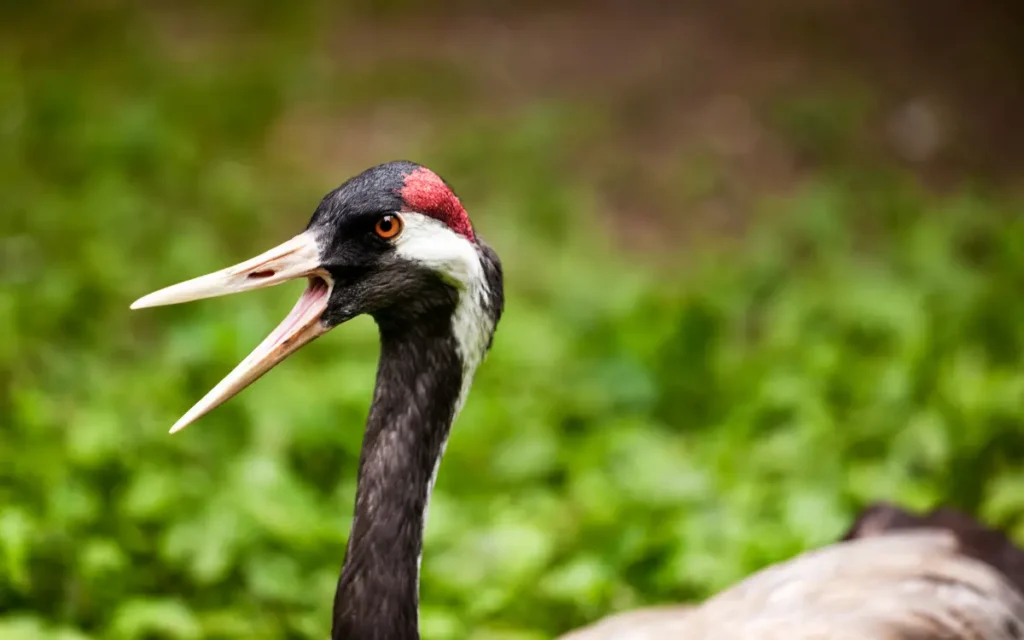
The Red-crowned Crane, one of the world’s largest crane species, boasts a tall and elegant stature. Its beak is long, pointed, and adapted for foraging in wetlands, capturing aquatic prey like fish and amphibians.
Known for their striking appearance, these cranes feature a white plumage with a distinct red patch atop their heads.
They hold cultural significance in several Asian countries and are revered for their graceful dance-like courtship displays.
- Scientific Name: Grus japonensis
- Wingspan: 86.61 – 98.42 in (220 – 250 cm)
- Weight: 169.31 – 370.37 oz (4799.85 – 10499.81 gm )
- Egg: Lay 2 eggs
- Location to see: Japan, China, North Korea, South Korea, and Russia.
Call:-
20. Mandarin Duck:
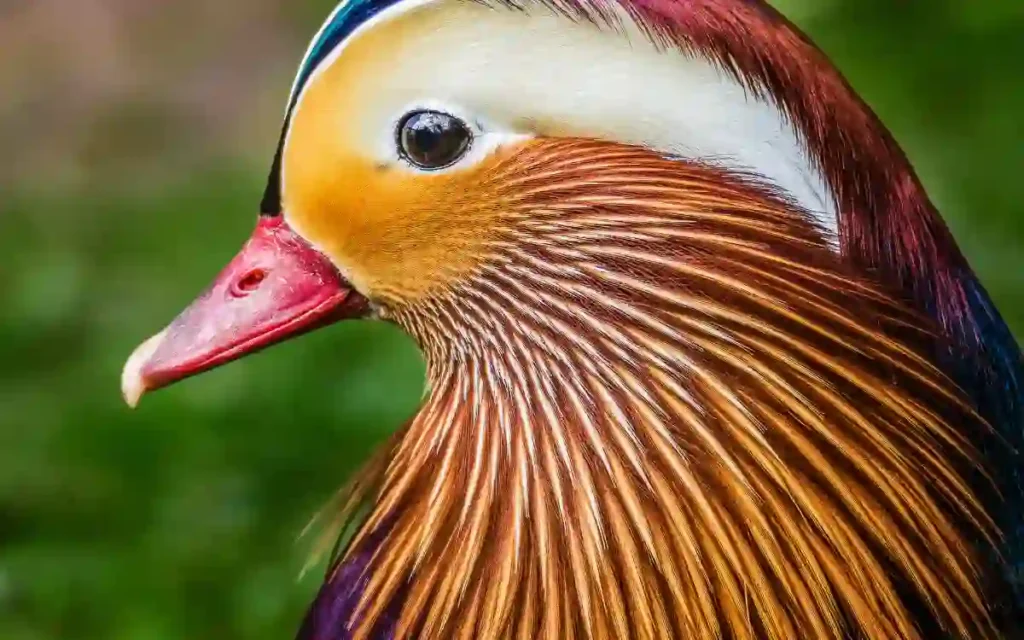
The Mandarin Duck is a striking waterfowl species known for its vibrant plumage. The male has a distinctive beak that is short, sharp, and suited for foraging in water and mud.
These ducks are native to East Asia and are highly recognized for their striking appearance. Male Mandarin Ducks exhibit iridescent blues, greens, and oranges, while females are more subdued in coloration.
They’re often considered a symbol of beauty and fidelity and are admired by bird enthusiasts worldwide
- Scientific Name: Aix galericulata
- Wing span: 26 – 30 in (65 – 75 cm )
- Weight: 14.10 – 24.69 oz (400 – 700 gm)
- Egg: Lay 9 to 12 eggs
- Location to see: Korea, Eastern Russia, China, Taiwan, and Japan.
Call:-
FAQS :
Q: What are some birds with colorful beaks?
A: Some birds with colorful beaks include Toco Toucans, Rhinoceros Hornbills, Atlantic Puffins, Keel-billed Toucans, and Scarlet Macaws.
Q: Why do some birds have colorful beaks?
A: Birds have colorful beaks for a variety of reasons, including attracting mates, communicating with other birds, and finding food. The colors of a bird’s beak can also be influenced by their diet.
Q: Are there any birds with red beaks?
A: Yes, there are many bird species with red beaks, including the Scarlet Macaw, Keel-Billed Toucan, Red Crossbill, and Vermilion Flycatcher.
Q: Can a bird’s beak change color?
A: A bird’s beak can change color as they age, but it is not a common occurrence. The color of a bird’s beak can also be influenced by its diet and environment.
Q: What is the purpose of a bird’s beak?
A: A bird’s beak is used for a variety of purposes, including eating, grooming, and building nests. The shape and size of a bird’s beak can also be adapted to their specific diet and environment.
Conclusion:
Analyzing 20 Birds With Colorful Beaks has shown us how nature’s artistry is displayed in birds. From bright toucans to amazing Mandarin Duck, each bird’s beak adds to the spectacle of the wild.

